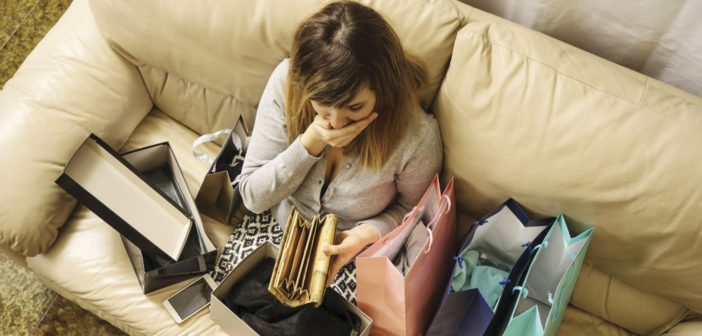Can’t turn down a sale even if you have plenty of the item at home? How many credit cards have you maxed out? When was the last time your bank account was overdrawn because you had to have a new piece of clothing?
Shopping addiction – also known as Compulsive Buying Disorder – affects about 6% of women and 5.5% of men (roughly 18 million adults.) For the shopping addict, buying something produces a euphoric effect similar to that produced by consuming alcohol. In fact, it is common for shopping addicts to also be addicted to alcohol, or suffer from an eating disorder. Many would define shopping addiction as the compulsion to spend money, regardless of need or financial means.
The advent of the Internet may have caused an increase in shopping addiction. The capacity to buy anything at any time makes it much easier to fall into the addiction trap.
Symptoms of Compulsive Buying Disorder include:
- Obsessing over purchases on a daily basis
- Shopping in order to change your mood
- Shopping so much it interferes with your daily life
- Feeling bad if prevented from buying
- Shopping continues to put you deeper into debt
- Continually spending money that you don’t have
The University of Bergen recently produced the Bergen Shopping Addiction Scale, which is used to determine whether a person may be suffering from shopping addiction. It consists of seven basic criteria:
- You think about shopping/buying things all the time.
- You shop/buy things in order to change your mood.
- You shop/buy so much that it negatively affects your daily obligations.
- You feel that you have to shop more/buy more to obtain the same satisfaction as before.
- You have decided to shop/buy less, but have not been able to do so.
- You feel bad if you, for some reason, are prevented from shopping.
- You shop/buy so much that it has impaired your well-being.
The criteria are scored by choosing one of these responses: completely disagree, disagree, neither agree or disagree, agree, and completely agree. Choosing “agree” or “completely agree” on more than four of the items suggests a possible dependency. (NOTE: this scale only tests whether there exists a possibility that someone may be addicted to shopping. It is not an absolute.)
Shopping addiction may be a hard problem to deal with due to our buying culture; but if you feel that you are dealing with this addiction and need a place to start, here are some tips that may help:
- Be aware of and avoid things that tempt you to shop.
- Get rid of credit cards; use cash as much as possible.
- Make a shopping list and stick to it.
- Wait at least 24 hours before buying something you want.
If you feel that you, or someone you know needs professional help, some organizations exist to deal with shopping addiction. Contact Shopaholics Anonymous (248.358.8508), or Debtors Anonymous. If you are looking for help with credit repair, contact FTC Credit Repair. If all else fails, seek the help of a professional.
For the shopping addict, buying something produces a euphoric effect similar to that produced by consuming alcohol.
References:
East, T. (2016). The facts about shopping addiction. CESI Financial Blog. Retrieved from cesisolutions.org/2016/01/the-facts-about-shopping-addiction/
Dronen, S. O. (2017). Addicted to shopping? University of Bergen. Retrieved from uib.no/en/news/91783/addicted-shopping
Healthline. (2018). Shopping addiction. Healthline Newsletter. Retrieved from healthline.com/health/addiction/shopping
Landau, E. (2012). Compulsive shopping: when spending is like substance abuse. CNN. Retrieved from cnn.com/2011/12/19/health/mental-health/shopping-addiction-compulsive-buying/index.html








